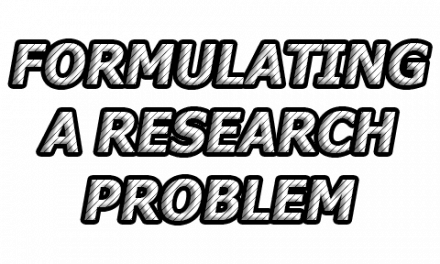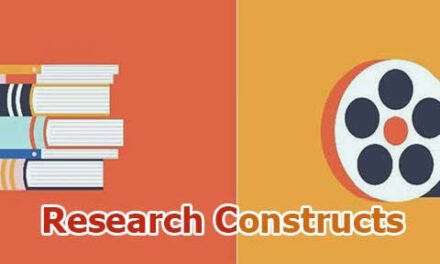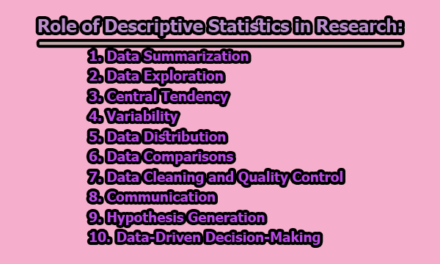
- Classification
- Physical Education
- Travel and Tourism
- BIBLIOMETRICS
- Banking System
- Real Estate
Select Page

Hypothesis | Definitions, Functions, Characteristics, Types, Errors & The Process of Testing a Hypothesis | Hypotheses in Qualitative Research
Posted by Md. Harun Ar Rashid | Apr 20, 2022 | Research Methodology
Hypotheses bring clarity, specificity, and focus to a research problem. It is not essential for a study and one can conduct a valid investigation without constructing a formal hypothesis. On the other hand, within the context of a research study, we can construct as many hypotheses as we consider to be appropriate. Hypotheses primarily arise from a set of ‘hunches’ that are tested through a study and one can conduct a perfectly valid study without having these hunches or speculations. Hypotheses are based upon similar logic. As a researcher, we do not know about a phenomenon, a situation, the prevalence of a condition in a population, or the outcome of a program, but we do have a hunch to form the basis of certain assumptions or guesses. We test these, mostly one by one, by collecting information that will enable us to conclude if our hunch was right. The verification process can have one of three outcomes. Our hunch may prove to be: right, partially right, or wrong. Without this process of verification, we cannot conclude anything about the validity of our assumption. In the rest of the article, we are going to present to you definitions, functions, characteristics, types, errors & the process of testing a hypothesis, and hypotheses in qualitative research.
Definitions of Hypothesis:
A hypothesis is a hunch, assumption, suspicion, assertion, or an idea about a phenomenon, relationship, or situation, the reality or truth of which we do not know.
A researcher calls these assumptions, assertions, statements, or hunches hypotheses and they become the basis of an inquiry.
In most studies, the hypothesis will be based upon either previous studies or our own or someone else’s observations.
“A hypothesis is a conjectural statement of the relationship between two or more variables.” ( Kerlinger, 1986)
Black and Champion define a hypothesis as “a tentative statement about something, the validity of which is usually unknown”
Bailey defines a hypothesis as; a proposition that is stated in a testable form and that predicts a particular relationship between two (or more) variables.
“A hypothesis is written in such a way that it can be proven or disproven by valid and reliable data – it is in order to obtain these data that we perform our study.” ( Grinnell, 2013 )
From the above definitions it is apparent that a hypothesis has certain characteristics:
- It is a tentative proposition.
- Its validity is unknown.
- In most cases, it specifies a relationship between two or more variables.
Functions of a Hypothesis:
A hypothesis is important in terms of bringing clarity to the research problem. Specifically, a hypothesis serves the following functions:
- A hypothesis provides a study with focus. It tells us what specific aspects of a research problem to investigate.
- It tells us what data to collect and what not to collect, thereby providing focus to the study.
- As it provides a focus, the construction of a hypothesis enhances objectivity.
- A hypothesis may enable us to add to the formulation of the theory. It enables us to conclude specifically what is true or what is false.
Characteristics of a Hypothesis:
There are a number of considerations to keep in mind when constructing a hypothesis. The wording of a hypothesis must have certain attributes that make it easier for us to ascertain its validity. These attributes are:
- A hypothesis should be simple, specific, and conceptually clear. There is no place for ambiguity in the construction of a hypothesis, as ambiguity will make the verification of a hypothesis almost impossible.
- It should be ‘unidimensional’ – that is, it should test only one relationship or hunch at a time.
- To be able to develop a good hypothesis we must be familiar with the subject area. The more insight we have into a problem, the easier it is to construct a hypothesis.
For example; the average age of the male students in this class is higher than that of the female students. The above hypothesis is clear, specific, and easy to test. It tells us what we are attempting to compare (average age of this class), which population groups are being compared (female and male students), and what we want to establish (higher average age of the male students).
Let us take another example; suicide rates vary inversely with social cohesion. (Black & Champion 1976) This hypothesis is clear and specific, but a lot more difficult to test. There are three aspects of this hypothesis: ‘suicide rates’; ‘vary inversely’, which stipulates the direction of the relationship; and ‘social cohesion. Finding out the suicide rates and establishing whether the relationship is inverse or otherwise are comparatively easy, but ascertaining social cohesion is a lot more difficult. What determines social cohesion? How can it be measured? This problem makes it difficult to test this hypothesis.
- A hypothesis should be capable of verification. Methods and techniques must be available for data collection and analysis.
- A hypothesis should be related to the existing body of knowledge.
- It is important that our hypothesis emerges from the existing body of knowledge, and that it adds to it, as this is an important function of research.
- This can only be achieved if the hypothesis has its roots in the existing body of knowledge.
- A hypothesis should be operationalizable. This means that it can be expressed in terms that can be measured. If it cannot be measured, it cannot be tested and, hence, no conclusions can be drawn.
Types of Hypothesis:
Theoretically, there should be only one type of hypothesis which is the research hypothesis – the basis of our investigation. However, because of the conventions in scientific inquiries and because of the wording used in the construction of a hypothesis, hypotheses can be classified into several types. Broadly, there are two categories of hypotheses: Research hypotheses and Alternate hypotheses.
Formulation of an alternate hypothesis is a convention in scientific circles. Its function is to explicitly specify the relationship that will be considered as true in case the research hypothesis proves to be wrong. An alternate hypothesis is the opposite of the research hypothesis. Conventionally, a null hypothesis, or hypothesis of no difference, is formulated as an alternate hypothesis.
Let us take an example; suppose we want to test the effect that different combinations of maternal and child health services (MCH) and nutritional supplements (NS) have on the infant mortality rate. To test this, a two-by-two factorial experimental design is adopted.
The second hypothesis in each example implies that there is a difference either in the extent of the impact of different treatment modalities on infant mortality or in the proportion of male and female smokers among the population, though the extent of the difference is not specified. A hypothesis in which a researcher stipulates that there will be a difference but does not specify its magnitude is called a hypothesis of difference.
Let us take an example; suppose we want to study the smoking pattern in a community in relation to gender differentials. The following hypotheses could be constructed:
- There is no significant difference in the proportion of male and female smokers in the study population.
- A greater proportion of females than males are smokers in the study population.
- A total of 60 percent of females and 30 percent of males in the study population are smokers.
- There are twice as many female smokers as male smokers in the study population.
In the examples, the way the first hypothesis has been formulated indicates that there is no difference either in the extent of the impact of different treatment modalities on the infant mortality rate or in the proportion of male and female smokers.
When we construct a hypothesis stipulating that there is no difference between two situations, groups, outcomes, or the prevalence of a condition or phenomenon, this is called a null hypothesis and is usually written as H0.
The Process of Testing a Hypothesis:
To test a hypothesis, we need to go through a process that comprises three phases:
- Constructing a hypothesis;
- Gathering appropriate evidence; and
- Analyzing evidence to draw conclusions as to its validity.

It is only after analyzing the evidence that we can conclude whether our hunch or hypothesis was true or false. In conclusion, we specifically make a statement about the correctness or otherwise of a hypothesis in the form of ‘the hypothesis is true or ‘the hypothesis is false’. It is, therefore, imperative that we formulate our hypotheses clearly, precisely, and in a form that is testable. In making a conclusion about the validity of a hypothesis, the way we collect our evidence is of central importance and it is therefore essential that our study design, sample, data collection method(s), data analysis and conclusions, and communication of the conclusions be valid, appropriate and free from any bias.
Errors in Testing a Hypothesis:
As already mentioned, a hypothesis is an assumption that may prove to be either correct or incorrect. It is possible to arrive at an incorrect conclusion about a hypothesis for a variety of reasons. Incorrect conclusions about the validity of a hypothesis may be drawn if:
- The study design selected is faulty;
- The sampling procedure adopted is faulty;
- The method of data collection is inaccurate;
- The analysis is wrong;
- The statistical procedures applied are inappropriate; or
- The conclusions drawn are incorrect.
Any, some or all of these aspects of the research process could be responsible for the inadvertent introduction of error in a study, making conclusions misleading. Hence, in the testing hypothesis, there is always the possibility of errors attributable to the reasons identified above. In drawing conclusions about a hypothesis, two types of error can occur:
- Rejection of a null hypothesis when it is true. This is known as a Type I error.
- Acceptance of a null hypothesis when it is false. This is known as a Type II error.
Hypotheses in Qualitative Research:
- One of the differences in qualitative and quantitative research is around the importance attached to and the extent of use of hypotheses in undertaking a study.
- As qualitative studies pay emphasis on describing, understanding, and exploring phenomena using categorical and subjective measurement procedures, the construction of hypotheses is neither advocated nor practiced.
- In addition, as the degree of specificity needed to test a hypothesis is deliberately not adhered to in qualitative research, the testing of a hypothesis becomes difficult and meaningless.
- It does not mean that we cannot construct hypotheses in qualitative research; the non-specificity of the problem as well as methods and procedures make the convention of hypotheses formulation far less practicable and advisable.
- Even within quantitative studies, the importance attached to and the practice of formulating hypotheses vary markedly from one academic discipline to another.
- In social sciences, the formulation of hypotheses is mostly dependent on the researcher and the academic discipline, whereas within an academic discipline it varies markedly between the quantitative and qualitative research paradigms.
References:
- Kerlinger, P., & Lein, M. R. (1986). Differences in Winter Range among age-sex Classes of Snowy Owls Nyctea scandiaca in North America. Ornis Scandinavica (Scandinavian Journal of Ornithology) , 17 (1), 1–7. https://doi.org/10.2307/3676745
- Black, J. A., & Champion, D. J. (1976). Methods and issues in social research . John Wiley & Sons.
- Bailey, K. D. (2006). Living systems theory and social entropy theory. Systems Research and Behavioral Science: The Official Journal of the International Federation for Systems Research , 23 (3), 291-300.
- Grinnell, F. (2013). Research integrity and everyday practice of science. Science and Engineering Ethics , 19 (3), 685-701. The Process Testing of a Hypothesis The Process Testing of a Hypothesis The Process Testing of a Hypothesis

Assistant Teacher at Zinzira Pir Mohammad Pilot School and College
About The Author

Md. Harun Ar Rashid
Related posts.

Advantages and Disadvantages of Archival Research
December 4, 2023

Formulating a Research Problem | Importance, Sources, Considerations in Selecting, and Steps in Formulating a Research Problem | Formulation of Research Objectives
September 26, 2022

Research Constructs | Examples of Research Constructs | Construct Validity and Reliability | Research Construct vs Variable
April 2, 2023

Role of Descriptive Statistics in Research
October 21, 2023
Follow us on Facebook
Library & Information Management Community
Recent Posts

Pin It on Pinterest
- LiveJournal
What Is Hypothesis Testing In Qualitative Research?

Table of Contents
Hypothesis testing in qualitative research: understanding the basics.
Hypothesis testing in qualitative research is a nuanced approach that combines the exploration of human experiences with the rigor of scientific inquiry. Unlike quantitative research, which relies on numerical data, qualitative hypothesis testing delves into meanings, experiences, and perspectives to generate or test hypotheses. This allows researchers to gain a deeper understanding of human phenomena .
In qualitative research, hypothesis testing involves examining patterns and themes that emerge from qualitative data . Researchers may use methods such as interviews, focus groups, or observations to gather rich, detailed information. These insights can then be used to develop hypotheses or to test existing ones, making hypothesis testing in qualitative research an integrative process.
By incorporating hypothesis testing, qualitative research bridges the gap between narrative findings and scientific validity. This approach not only enhances the credibility of qualitative studies but also provides a robust framework for examining complex social phenomena. By understanding how qualitative hypothesis testing works, readers can appreciate its unique contribution to the field of research.
Fundamentals of Hypothesis Testing
Hypothesis testing in qualitative research involves creating and assessing assumptions to understand complex phenomena. It guides researchers in exploring patterns and relationships within data.
Definition and Purpose
Hypothesis testing is a method used to make decisions based on data analysis. In qualitative research, it isn’t about proving a hypothesis right or wrong but rather exploring and understanding data-driven insights.
It starts with forming an idea or assumption . This idea is tested through data collection and analysis. The goal is to see if the evidence supports the initial assumption.
Qualitative hypothesis testing helps strengthen research findings . It provides a structured way to understand relationships and patterns in the data. It is particularly useful when researchers want to explore new theories or concepts.

Types of Hypotheses in Qualitative Research
In qualitative research, there are two main types of hypotheses: descriptive and explanatory .
Descriptive hypotheses aim to describe the characteristics of a phenomenon. For example, a researcher might hypothesize that a specific teaching method improves student engagement.
Explanatory hypotheses seek to explain the relationships between different variables. An example might be hypothesizing that student engagement is higher in smaller classes due to more personalized attention.
By using these different types, researchers can gain a deeper understanding of the subject matter and provide insightful analysis through their studies.
The Role of Theory in Hypothesis Formation
Theory plays a crucial role in forming hypotheses. It helps researchers decide whether to use inductive or deductive reasoning and build a solid conceptual framework.
Inductive vs. Deductive Reasoning
Inductive and deductive reasoning are two approaches to hypothesis formation. Inductive reasoning starts from specific observations and moves to broader generalizations. This approach is useful in qualitative research, as patterns emerge from the data. Deductive reasoning , on the other hand, begins with a theory or general statement and examines specific cases to test it.
In qualitative research, inductive reasoning allows researchers to explore new theories. It focuses on the data at hand and looks for trends and patterns. Deductive reasoning is more common in quantitative research, but it can also be used in qualitative studies to test existing theories. Both methods have their place, depending on the research goals and context.
Building a Conceptual Framework
A conceptual framework provides a structure for hypothesis formation. It involves identifying key concepts and their relationships. This framework helps in formulating research questions and hypotheses based on existing theories.
For instance, in qualitative data analysis , theories guide the way data is interpreted. By understanding these theories, researchers can develop more focused and meaningful hypotheses. Conceptual frameworks also ensure consistency and direction in research, making hypotheses more precise and testable.
Building a framework involves reviewing literature, identifying theoretical models, and examining previous studies. This critical step lays a foundation for sound hypothesis testing.
Methodological Approaches
Hypothesis testing in qualitative research often leverages specific methodologies to explore complex phenomena. Three key approaches are case studies, ethnography, and grounded theory. Each method provides unique insights and ways to understand data.
Case Studies
Case studies involve in-depth examination of a single instance or event. They’re useful for exploring detailed aspects of a particular subject. This method allows researchers to gather rich, qualitative data.
In hypothesis testing, case studies can be used to test theories by applying them to real-world situations. Researchers collect detailed information through interviews, observations, and documents. This data helps in understanding the nuances of the case. Case studies are particularly effective in fields like psychology, education, and social sciences.
A key benefit is the ability to generate a comprehensive view of the subject. However, the method requires careful planning and a structured approach to ensure the data is reliable.
Ethnography
Ethnography focuses on studying cultures and communities by immersing the researcher in the environment. This approach is valuable for understanding behaviors, traditions, and interactions from an insider perspective.
In hypothesis testing, ethnography helps in forming and examining hypotheses about cultural practices. Researchers live within the community and participate in daily activities. This method relies heavily on participant observation and interviews.
Ethnography is widely used in anthropology, sociology, and healthcare research. It provides deep insights into the social context of the studied group. Yet, it demands significant time and effort, as well as maintaining ethical considerations throughout the study.
Grounded Theory
Grounded theory involves developing theories based on data collected during research. Unlike other methods, it doesn’t start with a preconceived hypothesis. Instead, hypotheses are generated from patterns observed in the data.
This approach is suitable for exploring areas where existing theories are insufficient. Researchers collect and analyze data simultaneously, allowing emerging themes to shape the study. Techniques such as coding and memo-writing are integral to grounded theory.
Grounded theory is often used in fields like sociology, psychology, and nursing. It provides a systematic way to build new theories grounded in real-world data. The iterative process ensures that findings are closely tied to the observed phenomena, making the results highly relevant and applicable.
Data Collection and Analysis
Data collection in qualitative research involves gathering in-depth insights about a research problem. Methods may include interviews, focus groups, and observations. Interviews can be structured, semi-structured, or unstructured, each offering different levels of flexibility.
Focus groups encourage discussion among participants to provide a range of perspectives. Observations allow researchers to see actual behaviors and interactions in real-life settings.
Common Data Collection Methods:
- Interviews: One-on-one conversations to gather detailed information.
- Focus Groups: Group discussions to explore collective views.
- Observations: Watching and recording behaviors in natural settings.
Data analysis in qualitative research is iterative and ongoing. Unlike quantitative analysis, qualitative data analysis involves identifying patterns and themes. This process can be time-consuming but provides deep understanding.
Researchers often use coding to organize data. Coding involves labeling segments of data with descriptive tags. These tags help identify recurring themes and patterns. Once coded, data can be grouped to facilitate analysis.
Steps in Data Analysis:
- Transcription: Convert audio or video recordings into text.
- Coding: Assign labels to data segments.
- Theming: Identify patterns and group coded data into themes.
- Interpretation: Analyze themes to draw conclusions.
Using tools like software can aid in the coding and analysis process. Software such as NVivo or Atlas.ti helps manage large volumes of data efficiently. These tools assist in keeping the analysis organized and systematic.
Qualitative data collection and analysis require careful planning and execution. By using the appropriate methods and tools, researchers can gain valuable insights into their research questions.
Interpreting Results and Drawing Conclusions
Interpreting results in qualitative hypothesis testing involves ensuring the findings are credible and identifying the study’s limitations. This helps provide a reliable understanding of the research outcomes.
Credibility and Trustworthiness
Credibility is about how believable and convincing the findings are. Researchers should check if the data truly reflects what participants said and did.
To ensure trustworthiness, researchers use methods like * triangulation , which involves using multiple data sources or methods to confirm the findings. Member checks allow participants to review the findings and confirm their accuracy. Detailed documentation of the research process also helps others assess the study’s reliability.
Reflexivity involves researchers reflecting on their biases and how they might affect the research. Being open about potential biases adds to the credibility of the findings.
Limitations of Qualitative Hypothesis Testing
Every study has its limitations . In qualitative hypothesis testing, it’s important to acknowledge these to give a clear picture of how reliable the findings are.
Sample size can be a limitation. Qualitative studies often have smaller samples, which might not represent the broader population.
Subjectivity is another limitation. Researchers’ interpretations can introduce bias. To minimize this, using a clear and systematic approach is key.
Generalizability is often limited in qualitative research. The findings might not apply to other settings or groups. Researchers should be clear about this scope and context.
Recognizing these limitations helps set realistic expectations about the findings and their applicability.
Frequently Asked Questions
This section addresses key differences in hypothesis testing between qualitative and quantitative research, its formulation in qualitative studies, and its role in qualitative research design.
How does hypothesis testing differ between qualitative and quantitative research?
Quantitative research uses hypothesis testing to measure and analyze numerical data. It focuses on statistical significance. Qualitative research, on the other hand, explores more abstract and subjective data. It may use hypothesis testing less formally to understand patterns or themes.
Can you provide examples of how a hypothesis is formulated in qualitative studies?
In qualitative studies, a hypothesis might explore how social factors affect individual behavior. For instance, one might hypothesize that community support positively impacts mental health among teenagers. These hypotheses are tested by observing and analyzing participants’ experiences and perspectives.
What role does the null hypothesis play in qualitative research design?
The null hypothesis suggests there is no relationship between variables. In qualitative research, it might not be used as rigidly as in quantitative studies. Researchers focus more on exploring relationships and gaining insights rather than strictly proving or disproving a null hypothesis.
How is hypothesis testing of qualitative data conducted?
Hypothesis testing in qualitative data involves coding and categorizing data to identify themes. Researchers look for patterns and relationships within these themes. They may gather narratives, conduct interviews, or observe behaviors to support or refine their hypotheses.
In what ways can qualitative research include hypotheses?
Qualitative research can start with hypotheses to guide the study. These hypotheses help frame research questions and focus the investigation. They can evolve as more data is collected. Hypotheses provide a starting point for exploring complex social and behavioral phenomena.
What are the characteristics of a good research hypothesis in qualitative studies?
A good qualitative research hypothesis is clear and specific. It addresses a particular aspect of the study and is open to exploration. It should be flexible to accommodate new findings and insights. The hypothesis must also be relevant to the research context and questions.
Supercharge the way you Process interviews
Stop wasting hours sorting through transcripts. Get straight to the insights you need.
Discover more from DialogueIQ
Subscribe now to keep reading and get access to the full archive.
Type your email…
Continue reading

IMAGES
COMMENTS
"Qualitative hypothesis-generating research involves collecting interview data from research participants concerning a phenomenon of interest, and then using what they say in order to develop ...
(Nieswiadomy, 1993, p. 151). In grounded theory, the questions may be directed toward generating a theory of some process, such as the exploration of a process as to how caregivers and patients interact in a hospital setting. In a qualitative case study, the questions may address a description of the case and the themes that emerge from ...
Qualitative research is a methodology for scientific inquiry that emphasizes the depth and richness of context and voice in understanding social phenomena. 3 This methodology is constructive or interpretive , aiming to unveil the "what," "why," "when," "where," "who," and "how" (or the "5W1H") behind social behaviors ...
"A hypothesis is a conjectural statement of the relation between two or more variables". (Kerlinger, 1956) "Hypothesis is a formal statement that presents the expected relationship between an independent and dependent variable."(Creswell, 1994) "A research question is essentially a hypothesis asked in the form of a question."
Qualitative studies use data collected from participant observations, the observations of researchers, interviews, texts and similar sources of information. Unlike a quantitative study, which uses specific measurements to determine hypothesis and conclusions, a qualitative study does not measure data according to a ...
Every research starts with the identification of a problem. In qualitative research, a hypothesis is used in the form of a clear statement concerning the problem to be investigated. Unlike in quantitative research, where hypotheses are only developed to be tested, qualitative research can lead to hypothesis-testing and hypothesis-generating ...
In addition, as the degree of specificity needed to test a hypothesis is deliberately not adhered to in qualitative research, the testing of a hypothesis becomes difficult and meaningless. It does not mean that we cannot construct hypotheses in qualitative research; the non-specificity of the problem as well as methods and procedures make the ...
Hypothesis testing in qualitative research is a nuanced approach that combines the exploration of human experiences with the rigor of scientific inquiry. Unlike quantitative research, which relies on numerical data, qualitative hypothesis testing delves into meanings, experiences, and perspectives to generate or test hypotheses. ...
of qualitative hypothesis-generating research in T able 5. Qualitative studies usually pose at least one central research question and several . subquestions starting with . How. or . What. These ...
Qualitative Research Tends To: ! Answer research questions rather than test a hypothesis. ! Seldom look at the effectiveness of an intervention. ! Examine the perceptions, actions, and feelings of participants. ! Obtained detailed information from interviews, content analysis, or observations. 8